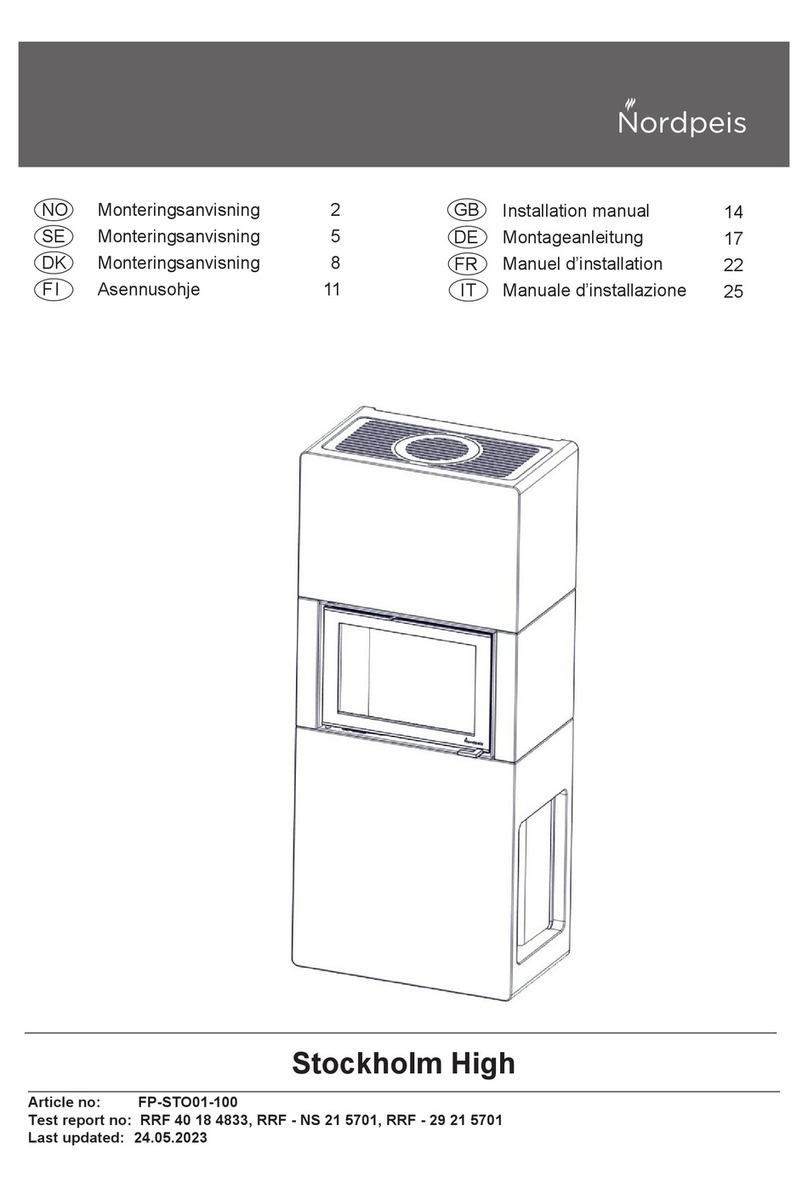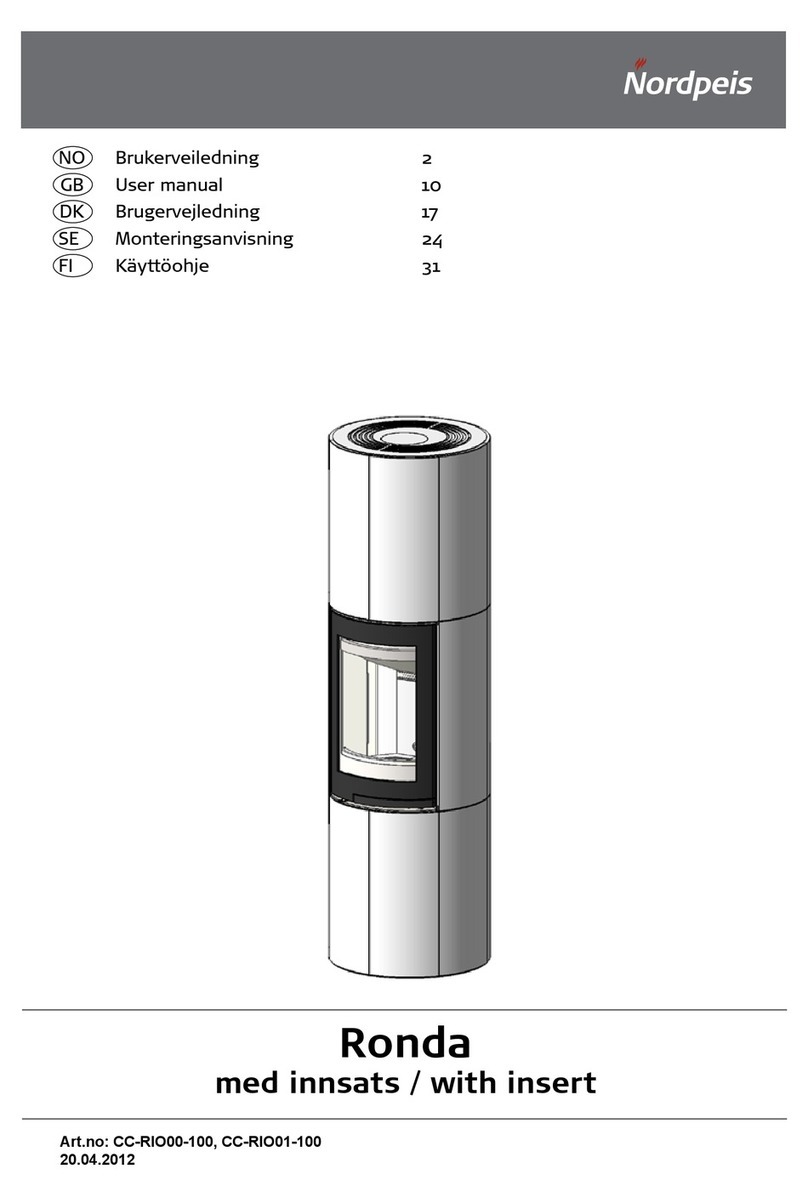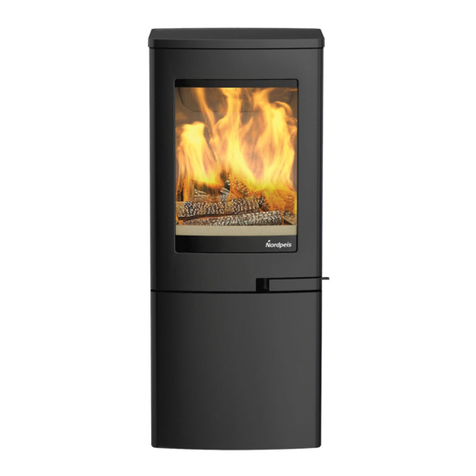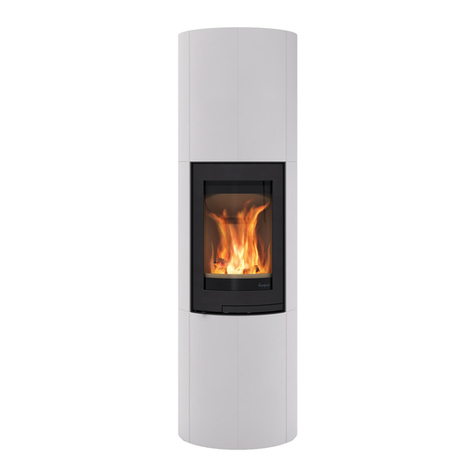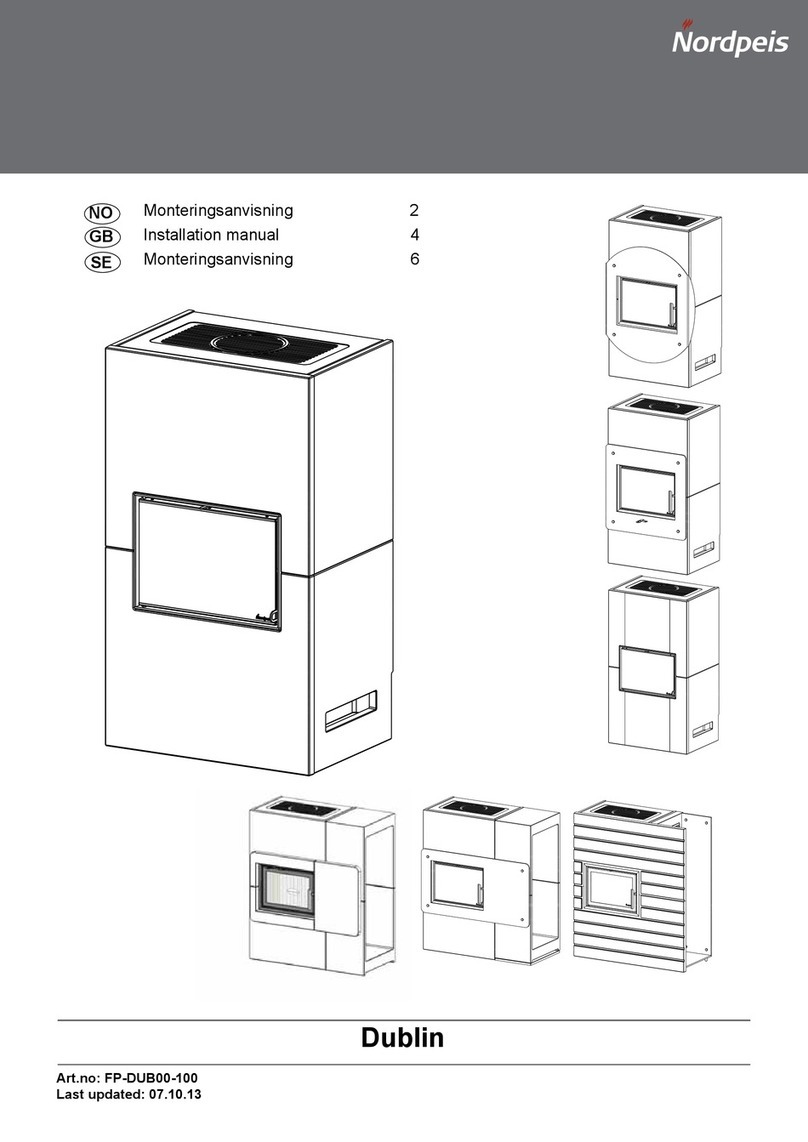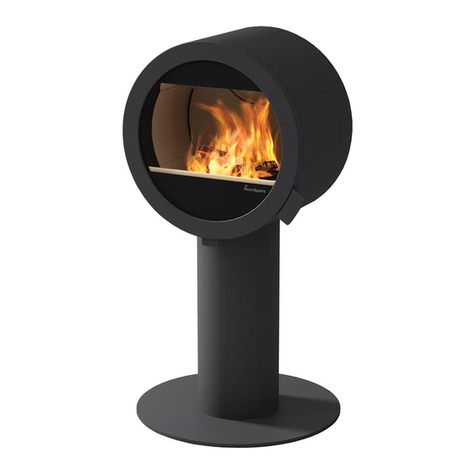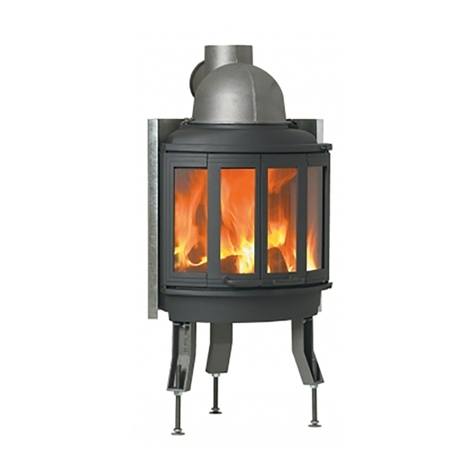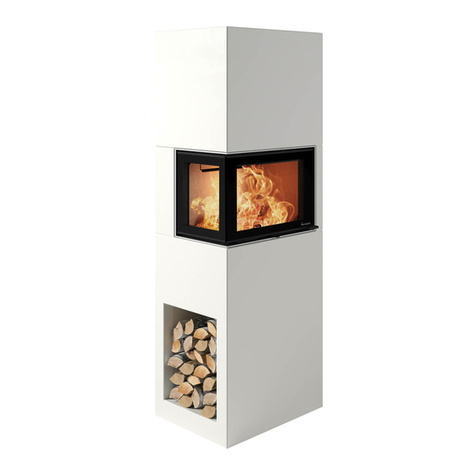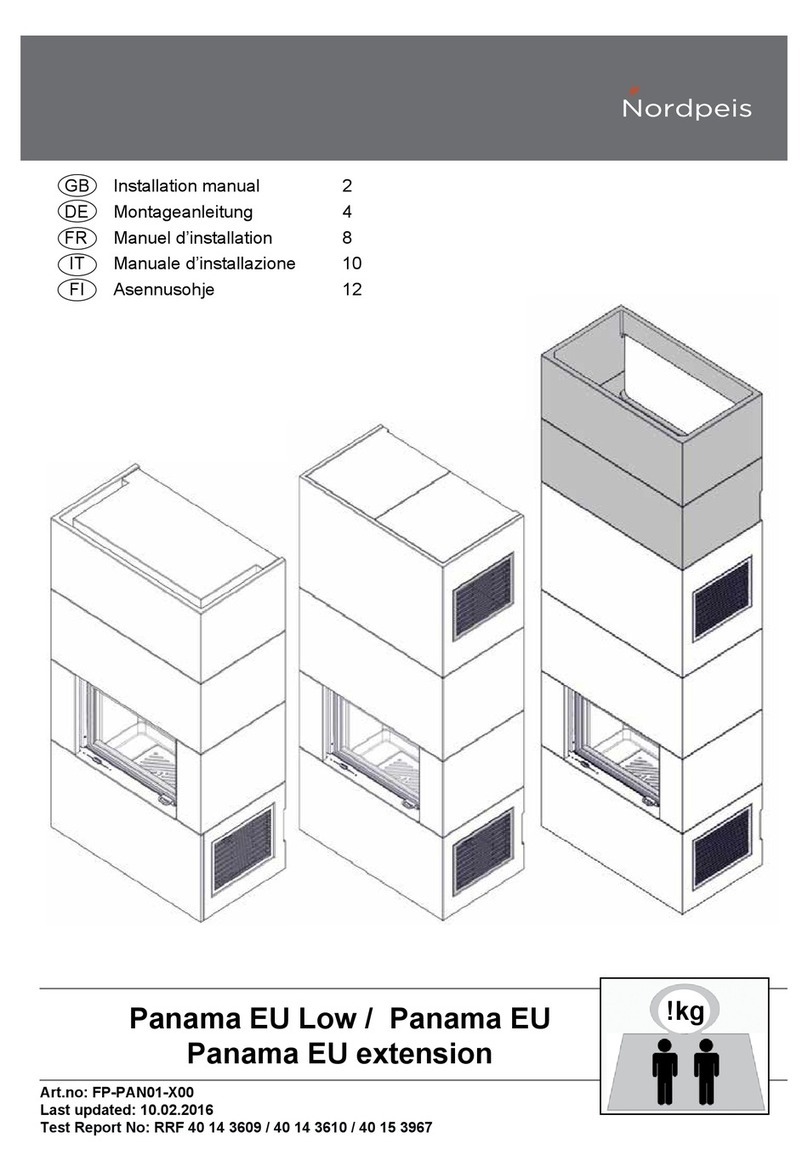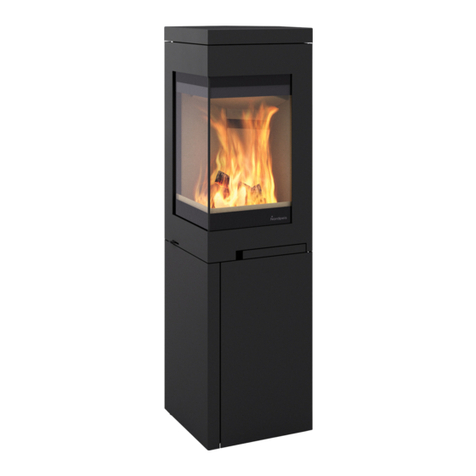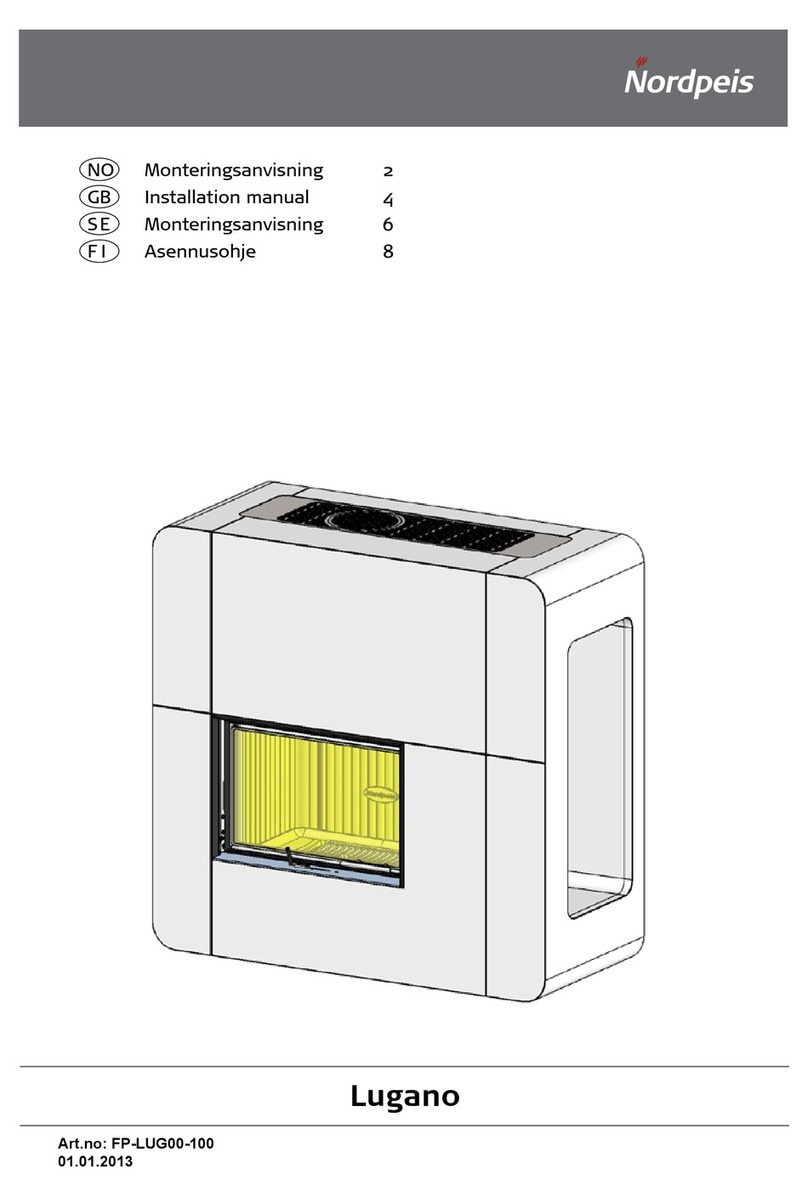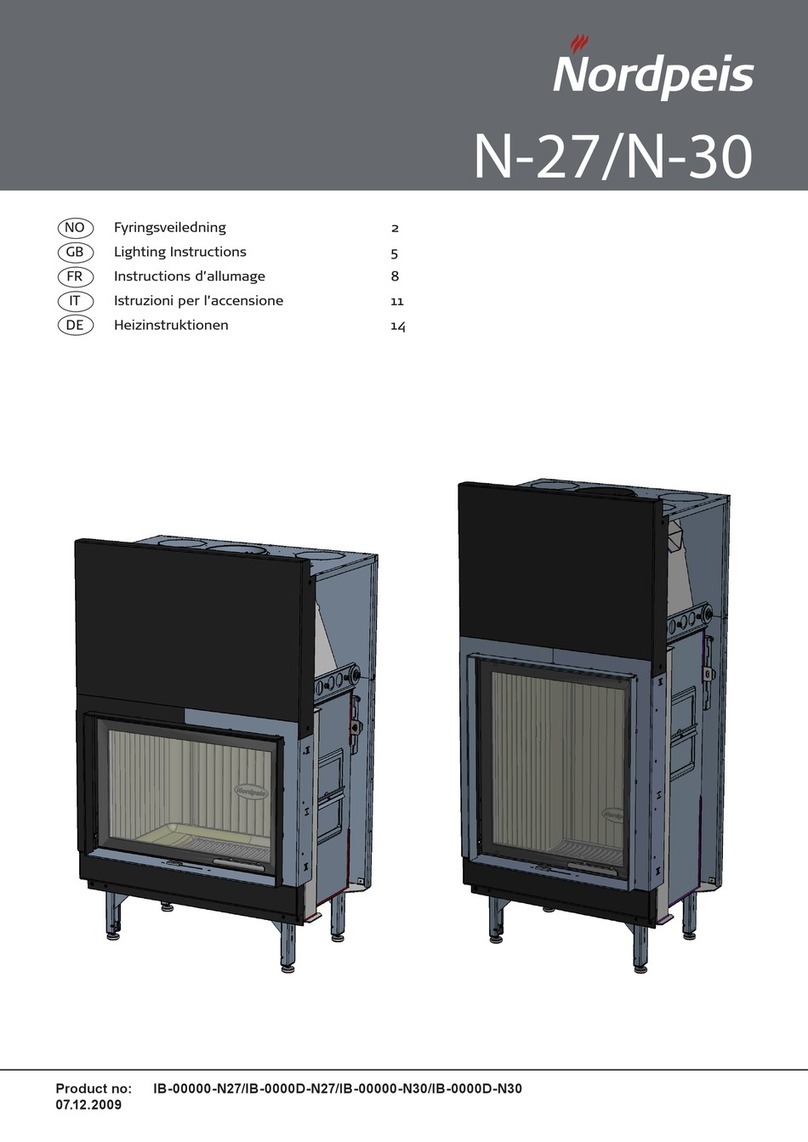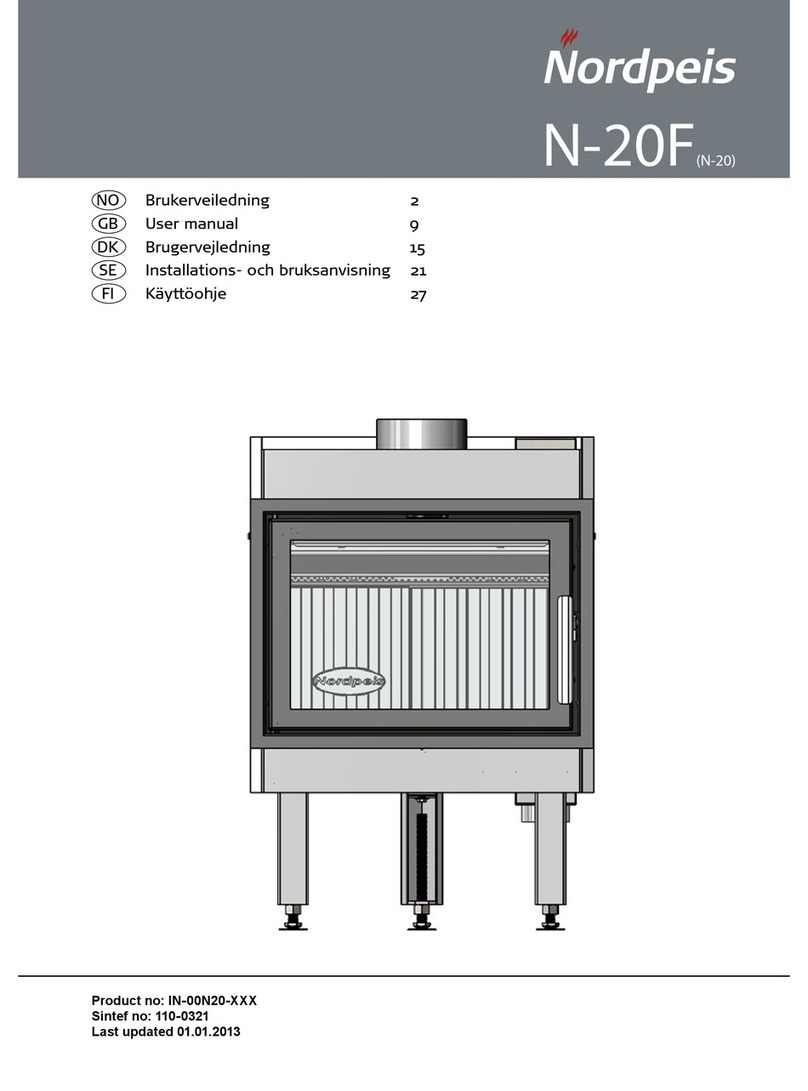
5
NO
Gjenvinning av emballasje
Emballasjen som følger produktet skal gjenvinnes etter
det gjeldene lands forskrifter.
Fyringsrytme
Et varmelagrende produkt skal ikke overfyres da
dette kan gi skader på produktet. For å utnytte et
varmelagrende produkt maksimalt er det derfor viktig å
optimalisere fyringsrytmen og hvor store ileggene skal
være. Les hvilke fyringsintervaller og ileggstrørrelser
som gjelder for ditt produkt.
3. Fyringstips
Den beste måten å tenne opp et ildsted er ved bruk av
opptenningsbriketter og kløyvet, tørr småved. Aviser gir
mye aske og trykksverten er ikke bra for miljøet.
Reklamer, magasiner, melkekartonger og lignende er
ikke egnet for opptenning i peis. Det er viktig med god
lufttilførsel ved opptenning. Når skorsteinen blir varm
øker trekken og døren kan lukkes
Advarsel! For å unngå brannskader, må du være
oppmerksom på at alle overater kan bli varme
under bruk.
Advarsel: Bruk ALDRI opptenningsvæske
som bensin, paran, rødsprit eller lignende
til opptenning. Du kan skade både deg selv
og produktet.
Bruk alltid ren og tørr ved med et maksimalt fuktinnhold
på 20% / min. 16%. Fuktig ved krever mye luft til
forbrenningen og det må brukes ekstra energi/varme til
å tørke ut det fuktige treet. Dette gir mindre
varmeavgivelse til omgivelsene samtidig som det fører
til sotdannelse på glasset og i skorsteinen, med fare for
beksot og skorsteinsbrann.
Skulle pipebrann oppstå, lukk døren og lutilfør-
selen til ildstedet, ring så brannvesenet. Etter en
pipebrann skal fyringsannlegget besiktiges og
godkjennes av brann og feievesenet.
Lagring av ved
For å forsikre seg om at veden er tørr, bør treet
felles om vinteren og lagres om sommeren under tak
på et sted med god utlufting. Vedstabelen må aldri
dekkes av en presenning som ligger mot jorden, da
presenningen vil fungere som et tett lokk som vil
forhindre veden i å tørke. Oppbevar alltid en mindre
mengde ved innendørs i noen dager før bruk, slik at
fukten i overaten på veden kan fordampe.
Fyring
For lite luft til ildstedet kan medføre at glasset sotes.
Tilfør derfor luft til bålet like etter at brenselet er lagt
på, slik at det er ammer i brennkammeret og gassene
forbrennes. Åpne opptennings-/fyringsventilen og ha
døren litt på gløtt til ammene får godt tak.
Merk at lufttilførsel til forbrenningen også kan bli for
stor og gi en ukontrollerbar amme som svært raskt vil
varme opp hele ildstedet til en ekstremt høy temperatur
(gjelder fyring med lukket, eller nesten lukket dør). Fyll
derfor aldri brennkammeret helt opp med ved.
Advarsel! Døren til brennkammeret skal alltid
være stengt. Unntatt under opptenning, nytt illegg
og ved fjerning av aske.
Valg av brensel
Alle typer tre, som bjørk, bøk, eik, alm, ask og frukttre
kan brukes som brensel i ildstedet. Tresorter har
forskjellige hardhetsgrader - jo høyere hardhetsgrad
veden har, desto høyere er energiverdien. Bøk, eik og
bjørk har den høyeste hardhetsgraden.
NB! Vi anbefaler ikke bruk av fyringsbriketter/kompakt-
ved i våre brennkamre, da disse produktene kan utvikle
vesentlig høyere temperatur enn brennkammeret tåler.
Fyringsbriketter/kompaktved anvendes på eget ansvar
og kan føre til at garantien bortfaller.
Advarsel:
Bruk ALDRI impregnert tre, malt tre, plastlaminat,
kryssner, sponplater, avfall,
melkekartonger, trykksaker eller lignendesom
brensel.
Ved bruk av disse materialene bortfaller
garantien.
Felles for disse materialene er at de under
forbrenning kan danne saltsyre og tungmetaller
som er skadelige for miljøet, deg og ildstedet.
Saltsyren kan også angripe stålet i skorsteinen
eller murverket i en murt skorstein. Unngå også å
fyre med bark, sagspon eller annet ekstremt nt
kløyvet ved unntatt ved opptenning. Denne form
for brensel gir lett overtenning som kan resultere i
for høy eekt.
Advarsel: Pass på at ildstedet ikke blir
overopphetet – det kan føre til uopprettelig skade
på ildstedet. Slike skader dekkes ikke av
garantien.
Kilde: “Håndbok, eektiv og miljøvennlig vedfyring” av Edvard Karls-
vik SINTEF Energiforskning as og Heikki Oravainen, VTT.
For egen sikkerhet, følg monteringsanvisningen. Alle
sikkerhetsavstander er minimumsavstander. Installasjon av
ildsteder må i tillegg være i henhold til det enkelte lands lover
og regler. Nordpeis AS står ikke ansvarlig for feilmontering av
ildstedet.
Vi tar forbehold om trykkfeil og endringer.
For sist oppdaterte versjon og mer utfyllende informasjon om
brannmurer, pipetilkobling etc., se våre nettsider
www.nordpeis.no

